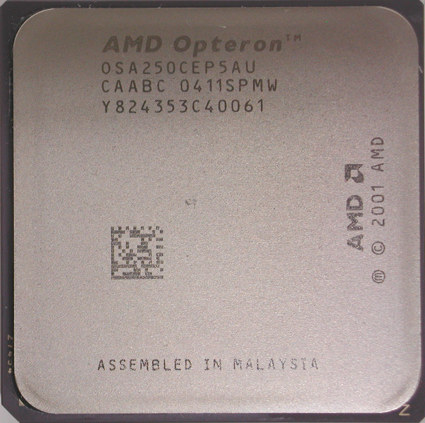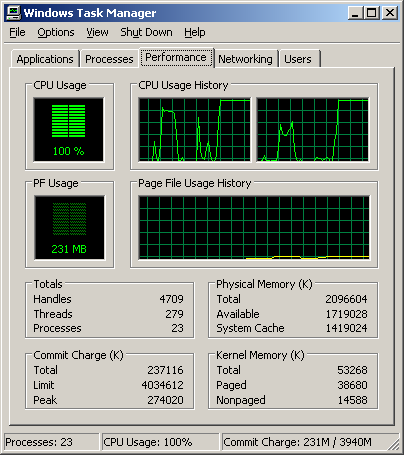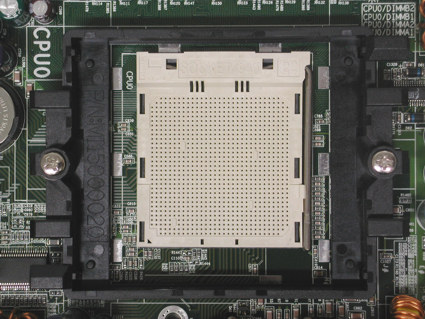AMD's Opteron 250 vs. Intel's Xeon 3.6 GHz in a Workstation Duel of the Elite
AMD Opteron Processor
The Opteron 250 from AMD
In the case of AMD, the clock rate seems to be stagnating - it has not increased since the Athlon64 FX 53, the Athlon64 3800+ and the Opteron 250. The maximum is 2.4 GHz, and the Texas manufacturer of the 130 Nm version won't say more than that. For comparative purposes the AthlonXP 2800+ was clocking 2.25 GHz as early as the end of 2002.
Unlike the desktop processors, the Opterons continue to work with HyperTransport channels with speeds of 800 MHz (3.2 GB/s), while the desktop models based on socket 939 have been accelerated up to 1 GHz (4 GB/s). The latter would have been advantageous particularly for servers and workstations, but AMD still has not taken this route. However, this is somewhat the case with Intel as well, because it settles for DDR2 400 in the E7525. After all, safety first.
With two CPUs it really takes off - assuming the right applications. Accordingly, WindowsXP also displays two load curves.
The processor socket for the Opteron has 940 pins, whereas the new Athlon64 processors work with Socket 939. One significant difference, besides the different HyperTransport speed, is the support of registered DRAMs. Incidentally, the Athlon64 FX 51 also used this socket.
Get Tom's Hardware's best news and in-depth reviews, straight to your inbox.
Current page: AMD Opteron Processor
Prev Page AMD Is Winning Next Page One, Two, Four... Or How About Eight CPUs?
Patrick Schmid was the editor-in-chief for Tom's Hardware from 2005 to 2006. He wrote numerous articles on a wide range of hardware topics, including storage, CPUs, and system builds.
-
bgd73 hey thanks for this. There is errors in the test, especially in memory speed of xeons, in fact, it is ridiculous. I am going for older 7525 chipset in CEB motherboard...these machines are just getting started. I be sure to go for HT. thanks.Reply


